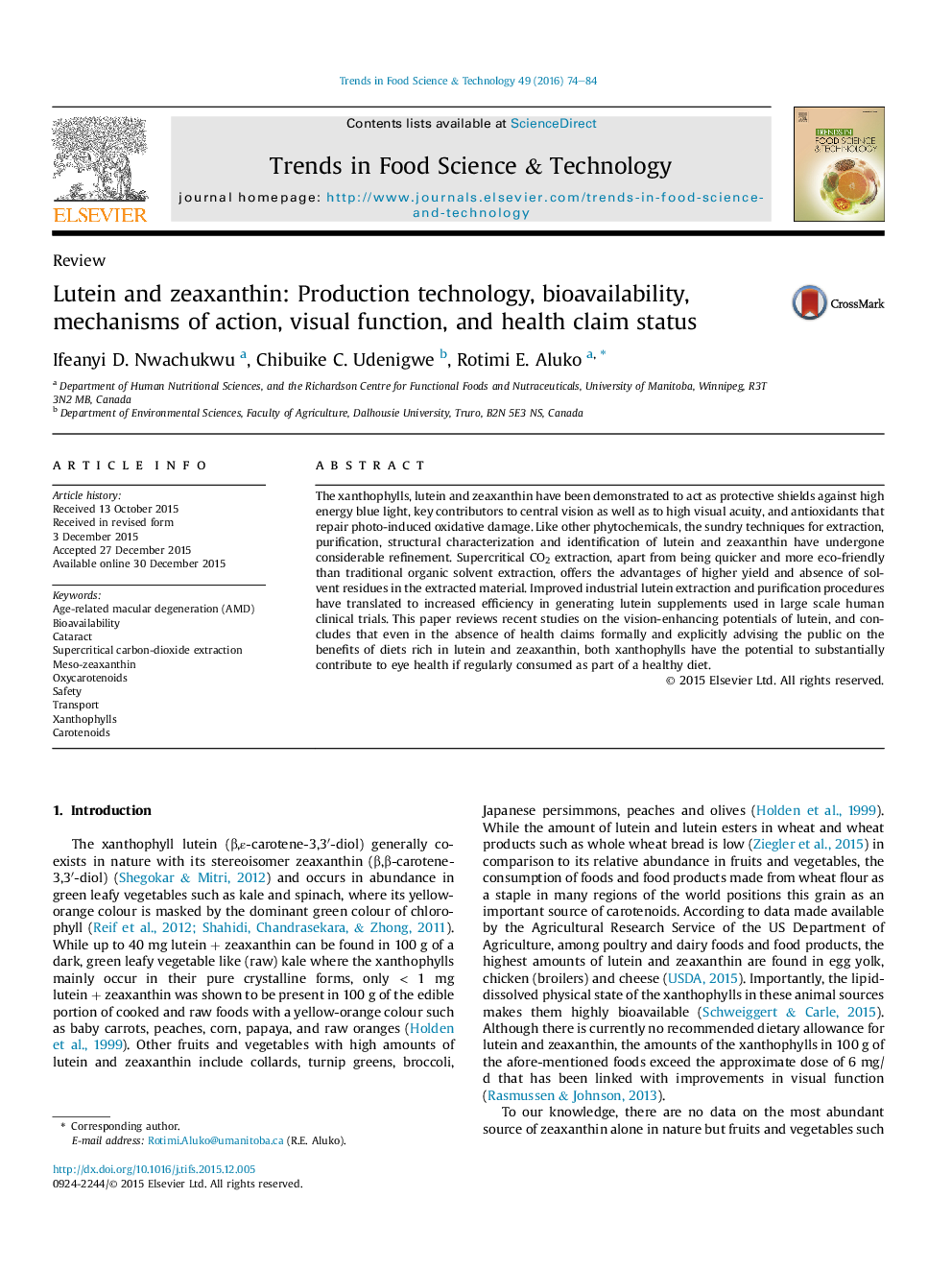| Article ID | Journal | Published Year | Pages | File Type |
|---|---|---|---|---|
| 2099719 | Trends in Food Science & Technology | 2016 | 11 Pages |
•Lutein and zeaxanthin are stereoisomers that contribute to human visual health.•Dietary sources of lutein and zeaxanthin are mainly the green leafy vegetables.•Commercial extraction uses mainly flower petals of yellow Marigold.•Macular pigment density and UV-filtering capacity is dependent on lutein concentration.•Lutein enhances human visual health through photoprotective and antioxidant effects.
The xanthophylls, lutein and zeaxanthin have been demonstrated to act as protective shields against high energy blue light, key contributors to central vision as well as to high visual acuity, and antioxidants that repair photo-induced oxidative damage. Like other phytochemicals, the sundry techniques for extraction, purification, structural characterization and identification of lutein and zeaxanthin have undergone considerable refinement. Supercritical CO2 extraction, apart from being quicker and more eco-friendly than traditional organic solvent extraction, offers the advantages of higher yield and absence of solvent residues in the extracted material. Improved industrial lutein extraction and purification procedures have translated to increased efficiency in generating lutein supplements used in large scale human clinical trials. This paper reviews recent studies on the vision-enhancing potentials of lutein, and concludes that even in the absence of health claims formally and explicitly advising the public on the benefits of diets rich in lutein and zeaxanthin, both xanthophylls have the potential to substantially contribute to eye health if regularly consumed as part of a healthy diet.
